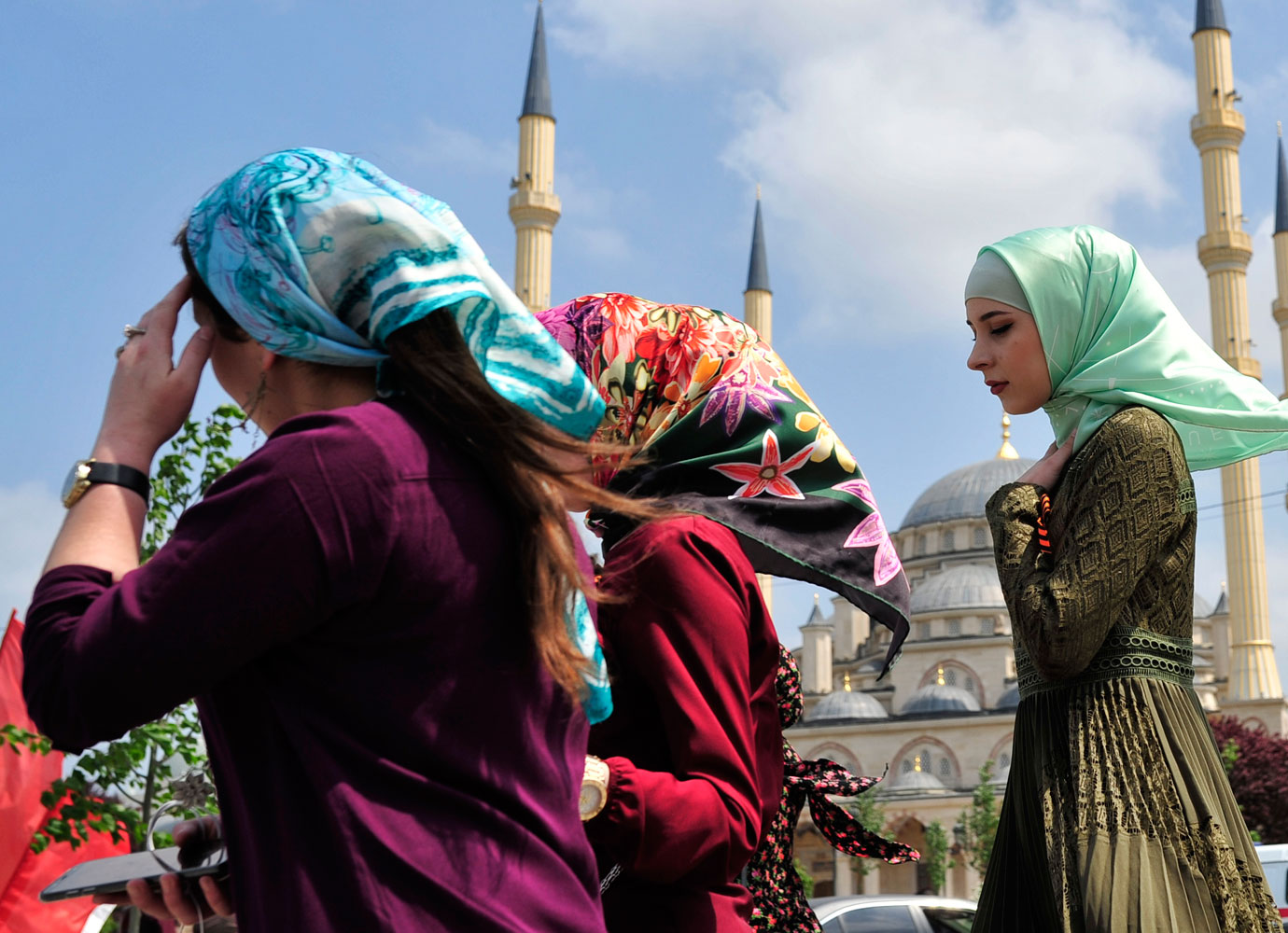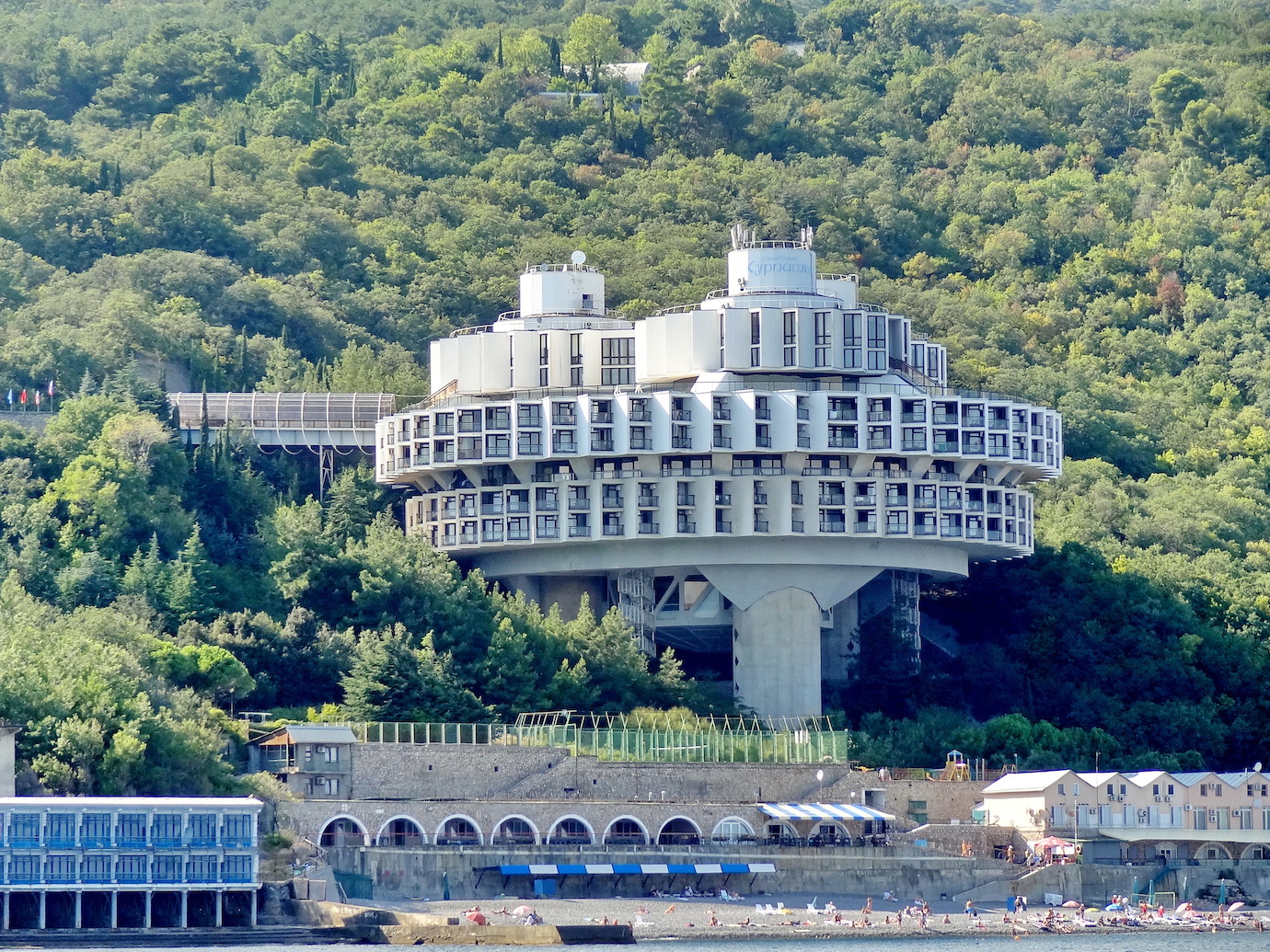From Soviet monumentalism to mosques, take a peek inside the first architectural guide to Chechnya and the North Caucasus
Gianluca Pardelli has spent much of his career travelling the former Soviet Union as a photographer, expert, and tour operator. His latest project, currently gathering funds on Kickstarter, is the first ever English-language architectural guide to Chechnya and the North Caucasus. Featuring photographs by Arseniy Kotov and Ilyas Hajji among others, it is set to be published by DOM Publishers. Help fund it here.
“As a documentary photographer I have been a regular visitor to Chechnya and the North Caucasus since 2013,” explains Gianluca Pardelli. After founding his Berlin-based travel company Soviet Tours, one of the first routes he chose — which is still popular today — is a 12-day itinerary crossing from Pyatigorsk to Makhachkala, which crosses Kabardia, Ossetia, Ingushetia, and Chechnya, in southern Russia. The architectural guide offers an introduction to the architecture of seven autonomous republics — Adygea, Karachay-Cherkessia, Kabardino-Balkaria, North Ossetia-Alania, Chechnya, Ingushetia, Dagestan — and two Russian territories – Stavropol Krai and the southern fringes of Krasnodar Krai, as well as Sochi.
“I am particularly fond of Soviet-era buildings,” says Pardelli. Travelling the North Caucasus, he was struck by the way “socialist modernist theories were applied to a local context”. One example of this is the abandoned Hotel Amanauz that rises out of the mountain peaks of Dombay. At first glance, it looks like any other grey brutalist tower block. But as well as the concrete, the building features wooden elements intended to reflect the surrounding woodland, while the honeycomb structure is a nod to the region’s bees and its reputation as a honey producer. “Some of the decorative elements hark back to traditional Karachay patterns (the Karachay are the Turkic-speaking Muslim people inhabiting the area). It was supposed to be decorated with further embellishments and mosaics, but the building was never completed.” .
Hotel Amanauz, Dombay (Karachay-Cherkessia). The project (1985) was developed by G. Perchenko and Evsey Kostomarov but was left incomplete. Image: Thomas Paul Mayer
Some of the most impressive monuments in the book are located outside urban areas and were built to mark a specific event, as in the case of the Saint George Monument in North Ossetia. What is most captivating about the region’s architecture, says Pardelli, is its unique mixture of ancient structures, Soviet monumentalism, and post-Soviet urban experiments. “Grozny and Sochi feel like two completely different worlds. There’s a stark contrast between the remote (and economically declining) mining towns and villages of Ossetia and Kabardia (such as Mizur and Tyrnyauz) and the gleaming and prosperous capitals of the republics.” But with so many examples to choose from, these architectural dichotomies can be found in one city: “Makhachkala, the capital of Dagestan, is an archetypal Soviet city with lots of chaotic, unregulated architecture on its outskirts. However, it’s also surrounded by beautiful hamlets and villages.”
It was in the mosques of Chechnya, Ingushetia, and Dagestan, where Pardelli had the most memorable encounters with locals: “In Chechnya, I noticed that the younger generation tends to favour the beauty of both ancient traditional structures (such as the watchtowers of the Chechen and Ingush highlands) and the new gargantuan mosques built under Kadyrov’s regime. Whereas the older people are fonder of the slowly disappearing cityscape they grew up with during the Soviet years.”
The publication will include texts that broaden the understanding of this lesser-known region: this includes an essay on the image of Chechnya and the North Caucasus in the collective memory of Soviet people; another on the roots of the conflict between Grozny and Moscow; a piece about the astounding ethno-linguistic diversity of Dagestan; and a text on holiday culture in the Caucasus. “This corner of the former Soviet Union (and present-day Russian Federation) is fascinating in every way: from its ethno-religious diversity and geopolitical complexity, to its troubled history, breathtaking natural scenery and, of course, awe-inspiring architecture,” says Pardelli.
Image: Nikolai Vassiliev
A mosaic in the State Philharmonic of Adygea, in Maykop: in the centre we see the legendary Nart hero Sosruko galloping with a torch in his hand, accompanied by a falcon in flight, outlined against the yellow disk of the sun. Not only is the rider imposing; so is his horse, its musculature accentuated by brownish-black highlights. The general symmetry of the composition echoes the stark monumentality of the hall itself, and the entire Philharmonic building, constructed in a peculiar late-brutalist aesthetic. The giant work (probably the largest depicting Sosruko) was created by the leading Moscow muralist Boris Pavlovich Neklyudov (1938-2014) and the People’s Artist of the Republic of Adygea Felix Muratovich Petuvash (born 1948). A joint undertaking by two outstanding masters, that is one of the most significant mosaics in the whole of North Caucasus.
Image: Lana Sator
The necropolis in Dargavs is also often referred to as the “City of the Dead” and comprises 99 different tombs and crypts. Some sources say the oldest of the crypts dates back to the 12th century, though others argue that the 14th century is more likely.
Image: Gianluca Pardelli
Deportation Memorial in Nazran (Ingushetia): first opened in 1998, it commemorates the Ingush and Chechen victims of Stalin’s 1944 policy of deportation and repression of ethnic groups.
Image: Gianluca Pardelli
Monument to the Defenders of the Caucasian Passes in Karachaevsk (Karachay-Cherkessia). The memorial, unveiled in 1968, was executed in a very strict, almost abstract brutalist aesthetic to stand out from the mountainous landscape. It is located on the site of a mass grave and is dedicated to the historic defenders who in August 1942 held off the Wehrmacht troops, thus stopping their advance southwards.
Image: Gianluca Pardelli
Restaurant Sosruko, situated in Nalchik (Kabardino-Balkaria), is shaped like local hero Sosruko holding a flaming torch.
Image: Thomas Paul Mayer
Saint George the Dragon Slayer Monument built in 1995 in Tamisk (Ossetia). Saint George is locally knows as Uastyrdzhi. The project of sculptor Nikolai Khodov, it was produced as a gift to the people of Ossetia. Today it is the largest equestrian monument in the world. Historically, this was where travellers once stopped and asked for help from higher powers; so the sanctuary of Uastyrdzhi Nykhasa was created.
Image: Nikolai Vassiliev
A bus stop in Psynadakha (Kabardino Balkaria). Built in 1970, it features a mosaic decoration, including a deer pictured against a tree bearing red fruit and a waterfall, and on another wall, a fallow deer with a cub, also set against a landscape.
Image: Gianluca Pardelli
The Central Mosque in Ekazhevo (Ingushetia): it was built in the mid-00s in the village where Shamil Basaev, the notorious Chechen terrorist, was killed by the FSB. This building emerged among the construction boom of religious buildings that followed the islamic revival of the late 90s.


